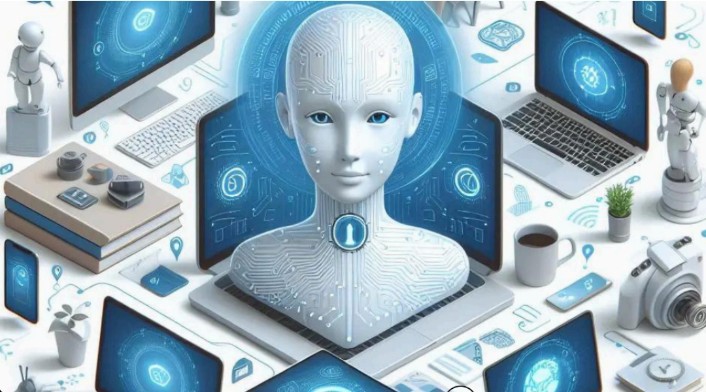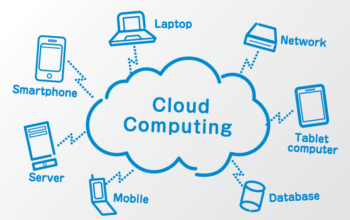Education is not an exception to how artificial intelligence (AI) is transforming numerous industries. Integrating artificial intelligence in education enhances student interaction and transforms learning experiences, particularly through chatbots. This blog explores how AI-powered chatbots are making a significant impact in education.
Enhancing Student Interaction with AI Chatbots
Personalized Learning Experiences
AI chatbots offer personalized learning experiences by tailoring content to individual student needs. These chatbots analyze student performance and adapt their responses to suit the learner’s pace and style.
Addressing individual learning gaps is a key aspect of this personalized approach. Chatbots identify areas where students struggle and provide targeted resources to improve understanding.
Providing customized resources and suggestions is another benefit. Based on performance data, chatbots recommend specific study materials and activities tailored to each student’s needs.
Offering immediate feedback and support is crucial for continuous improvement. Students receive real-time assistance and corrections, enabling them to learn and improve continuously.
24/7 Availability
One of the significant advantages of AI chatbots is their availability around the clock. Students can access assistance whenever they need it, making learning more flexible and accessible.
Reducing waiting time for responses ensures that students do not have to wait for office hours or teacher availability.
Ensuring continuous learning support means that students can study at their own pace and get help as soon as they encounter a problem.
Accommodating different time zones and schedules is particularly beneficial for international students or those with irregular schedules.
Interactive Learning Tools
AI chatbots are interactive tools that engage students in learning through various methods such as quizzes, flashcards, and interactive simulations.
Encouraging active participation keeps students engaged and makes learning more effective.
Providing instant feedback helps students understand their mistakes and learn from them immediately.
Making learning fun and interactive through gamified elements and interactive content increases student motivation and interest in the subject matter.
Creating Immersive Learning Environments:
Virtual Classrooms: Beyond Traditional Learning Spaces
Explore the concept of virtual classrooms enabled by AI, allowing students to participate in interactive learning experiences remotely.
Interactive Simulations and Experiential Learning:
Discuss how AI-driven simulations provide hands-on learning opportunities, allowing students to engage with complex concepts practically.
Augmented Reality and Virtual Reality:
Engaging Students in Dynamic Experiences Highlight the use of AR and VR technologies to create immersive learning experiences that captivate students’ attention and enhance their understanding.

Empowering Educators:
- AI-Powered Analytics for Informed Decision-Making: Explain how AI analytics tools help educators gather insights from student data to make informed decisions about teaching strategies and interventions.
- Automated Grading and Administrative Tasks: Discuss the time-saving benefits of AI in automating grading and administrative tasks, allowing educators to focus on more meaningful aspects of teaching.
- Facilitating Personalized Teaching Strategies: Describe how AI supports educators in implementing personalized teaching strategies by providing data-driven insights and recommendations tailored to individual student needs.
The Future of Education with AI:
Embracing Innovation for Sustainable Educational Development
Advocate for the responsible integration of AI in education to drive innovation and improve educational outcomes.
Addressing Challenges and Ethical Considerations:
Acknowledge the ethical concerns associated with AI in education and emphasise the importance of addressing them to ensure equitable access and safeguard student privacy.
Collaborative Efforts for the Integration of AI in Education:
Highlight the need for collaboration between technology developers, educators, policymakers, and other stakeholders to effectively integrate AI into education and maximise its benefits.
Transforming the Learning Experience
Efficient Administrative Support
AI chatbots streamline administrative tasks, allowing educators to focus more on teaching.
Reducing the administrative burden on educators means they can spend more time on instruction and less on paperwork.
Improving efficiency in handling student queries ensures that students get the information they need quickly and accurately.
Ensuring timely communication of important information keeps students informed about deadlines, events, and other critical updates.
Enhancing Student Engagement
By integrating AI chatbots into the learning environment, institutions can significantly enhance student engagement.
Keeping students motivated and involved is easier with the interactive and personalized nature of chatbots.
Tracking student performance and providing insights helps educators understand student progress and areas needing improvement.
Promoting a collaborative learning environment encourages students to interact with peers and participate in discussions and group activities.
Data-Driven Insights
AI chatbots collect and analyze vast amounts of data, providing valuable insights into student performance and behaviour.
Identifying learning trends and patterns allows educators to adapt their teaching strategies to better meet student needs.
Making informed decisions about curriculum adjustments ensures that the content remains relevant and effective.
Personalizing instruction based on data-driven insights helps address the specific needs of each student, enhancing their learning experience.
FAQs About Artificial Intelligence in Education
What is artificial intelligence in education?
Artificial intelligence in education refers to the use of AI technologies, such as machine learning, natural language processing, and chatbots, to enhance teaching and learning processes.
How do AI chatbots improve student interaction?
AI chatbots improve student interaction by providing personalized responses, offering 24/7 support, and engaging students with interactive learning tools.
Can AI chatbots replace teachers?
AI chatbots are not meant to replace teachers but to assist them by handling routine tasks and providing additional support, allowing teachers to focus on more critical aspects of education.
How do AI chatbots support personalized learning?
AI chatbots support personalized learning by analyzing student performance and adapting their responses and resources to meet individual learning needs and styles.
Are AI chatbots beneficial for all students?
Yes, AI chatbots can be beneficial for all students as they offer personalized support, enhance engagement, and provide immediate assistance, catering to diverse learning needs and preferences.
What are the challenges of using AI in education?
Challenges include ensuring data privacy, addressing the digital transformation divide, and maintaining the human touch in education. It’s essential to balance technology with human interaction to maximize the benefits.
Conclusion
The impact of artificial intelligence in education is profound, particularly through the use of AI chatbots. These chatbots enhance student interaction, provide personalized learning experiences, and transform the overall learning experience. As AI continues to evolve, its role in education will undoubtedly expand, offering even more innovative solutions to improve learning outcomes.





This is unquestionably the future. Just another example of how AI is going to revolutionize every facet of society in the not too distant future.